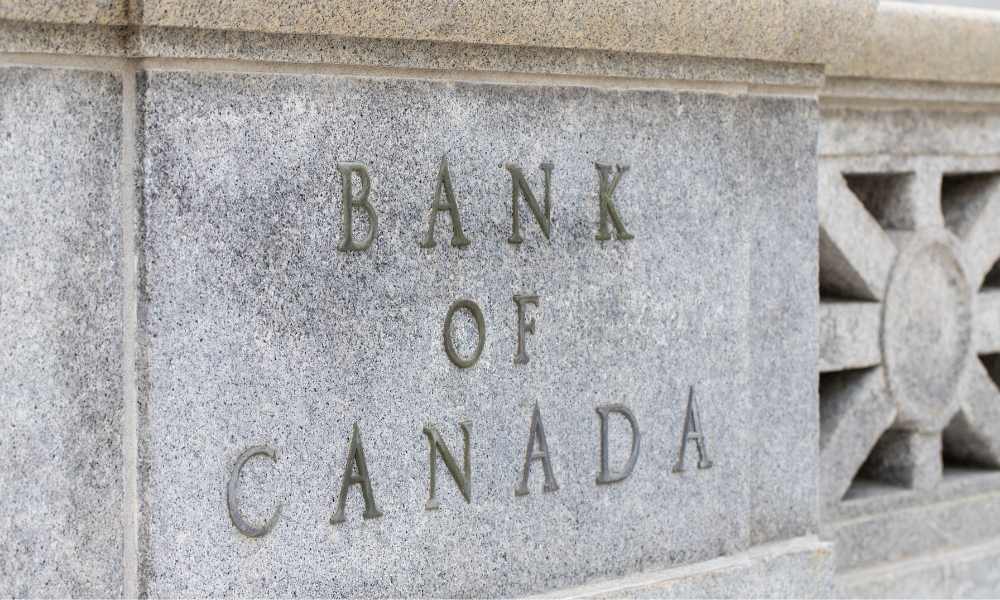Governor Tiff Macklem signals rate cut possible if tariffs ease and inflation trends support policy shift

The Bank of Canada has left its benchmark interest rate at 2.75 percent for the third consecutive time, but signalled a potential shift as trade disruptions and inflation dynamics pull in opposite directions.
Governor Tiff Macklem said a rate cut may be necessary “if a weakening economy puts further downward pressure on inflation and the upward price pressures from trade disruptions are contained,” as reported by BNN Bloomberg.
The decision, released Wednesday alongside the central bank’s monetary policy report, comes days before US tariffs on non-CUSMA-compliant Canadian goods could rise as high as 35 percent if a trade agreement is not reached.
Macklem said the Bank is closely assessing how the developments will affect business activity and export demand. He also noted they are watching whether cost increases will be passed on to consumers.
According to the Financial Post, the Bank outlined three scenarios in its report: current tariffs remaining in place, a de-escalation where tariffs are halved, and an escalation involving sweeping new duties.
Under the escalation case, GDP contracts through the remainder of 2025 and inflation rises above 2.5 percent by the third quarter of 2026.
The de-escalation scenario projects GDP growth around two percent in late 2025 and inflation staying below target until late 2026.
Despite these uncertainties, the Bank maintained that the Canadian economy shows signs of resilience. Macklem said, “we’re not expecting a big bounce back in exports,” but added that consumption continues to grow modestly.
According to the Financial Post, exports fell sharply in Q2 but are expected to stabilise by Q3, and the Bank expects residential investment to strengthen in the latter half of the year after an 11 percent decline earlier in 2025.
Underlying inflation sits at 2.5 percent, above the headline June figure of 1.9 percent, said the Bank.
As reported by the Financial Post, core inflation measures have hovered around three percent since April, driven by import costs on products like vehicles, clothing, and furniture.
The Bank attributes this to earlier increases in shipping prices, agricultural inputs, and a weaker Canadian dollar.
According to Charles St-Arnaud, chief economist at Alberta Central, resiliency in both the economy and labour market has allowed the Bank to delay action.
He told BNN Bloomberg that “the economy is no longer deteriorating” and noted a recovery in consumer and business confidence following earlier uncertainty.
Still, the Bank remains cautious. “The unusual degree of uncertainty does mean we have to put more weight on the risks,” said Macklem, adding that policy decisions will rely more on shorter-term data.
As per BNN Bloomberg, Macklem stated that “tariffs mean the economy is going to work less efficiently,” warning that growth will follow a “permanently lower path” unless trade barriers are lifted.
Some economists are already predicting rate cuts.
Ashish Dewan of Vanguard Canada said in a statement to BNN Bloomberg that he expects a 50 basis point cut by year-end.
RSM’s Joe Brusuelas added that the Bank “will and should cut rates two more times this year,” highlighting sustained hiring and a resilient private sector despite US trade tensions.
Desjardins’ chief economist Jimmy Jean told CBC News that the landscape remains favourable for a rate cut, possibly as early as September.
“The time to reduce interest rates won’t be in six months’ time,” he said. “You have to kind of react in advance.”
Meanwhile, Ontario Premier Doug Ford called the rate hold “shocking,” arguing it failed to address threats to Canadian jobs amid US tariffs.
In response, Macklem maintained the Bank’s independence and reiterated its dual responsibility: “We are going to make sure that… a tariff problem does not become an inflation problem.”
The decision also has implications for housing and mortgages.
Phil Soper of Royal LePage told BNN Bloomberg that steady rates help business confidence and housing activity.
“Stability is never a bad thing,” he said, though added that some improvement in fixed mortgage rates is likely only if trade relations stabilise.
Penelope Graham of Ratehub.ca told BNN Bloomberg that “variable mortgage rates aren’t going to change,” but fixed rates could rise due to elevated bond yields.
She encouraged borrowers to consider rate holds or pre-approvals in light of possible future increases.
The Bank noted that job losses remain concentrated in US trade-dependent sectors, with the unemployment rate at 6.9 percent.
However, broader employment trends remain steady.
According to St-Arnaud, the June gain of 83,000 jobs is notable, though monthly labour data can be volatile.
For small businesses, the impact of earlier rate cuts has yet to materialise.
Louise Southall of Xero said to Wealth Professional a May survey of 250 Canadian small businesses found 74 percent had seen no sales benefit from the Bank’s seven rate cuts since June 2024.
While she noted a slight improvement in confidence, hiring and investment plans remain subdued.
The Bank of Canada will announce its next policy decision on September 17.



